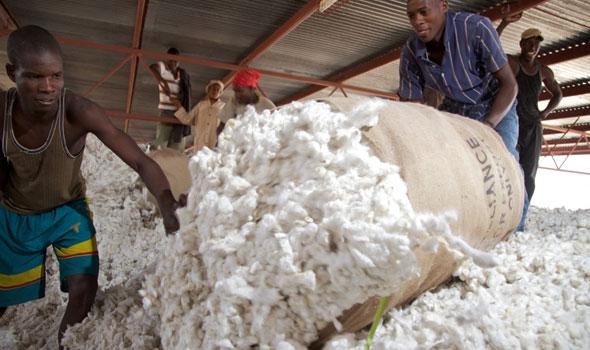Sub-Saharan African clothing and footwear market is worth $31 billion US dollars and growing. In a series of articles about the industry in Sub Sahara Africa, we will explore the policies, trade and the budding creative fashion industry in the region. This is the second part of the series where we focus on the raw material for the textile industry.
Read the first of our series: Africa Fashionomics: Making sense of the $31 Billion industry
Kenya has taken years to review and establish a commercially viable production of a variety of cotton laced with foreign genes from the naturally occurring bacterium Bacillus thurigensis. By the start of the year, the government announced it was ready to go full commercial in production of this variety to push the availability of raw materials.
It is highly expected that adoption and commercialization of Bt cotton will revitalize the textile industry and by extension contribute to the revival of the cotton sector and create up to 600,000 jobs on farms and apparel factories.
Bt cotton has a potential to produce 260,000 bales of cotton per hectare annually as compared to none Bt varieties, which stand at 28,000-30,000 bales, translating to about 572kg/hectare against a potential of 2,500kg/hectare.
But Kenya had more options but is choosing Bt cotton. The reason behind this is the failure of the traditional varieties to withstand pests and diseases. Of particular concern was the bollworm and droughts which ruined the older varieties causing the farmers losses and eventually closing several ginneries.
Though cotton diseases and pests were not entirely to blame for the collapse of the cotton industry in Kenya (other factors included cheap imports), the country textile industry was hard hit.
Kenya is not alone. Many countries in Africa have suffered from low production of cotton, wool and silk cutting the link between farm and industries. Before Kenya started its Bt cotton experiment, it was highly moved by similar work in Burkina Faso and South Africa. The two countries hoped they could reach the high production levels of the natural cotton that is experienced in Sudan. This experiment has had mixed results.
Read also: Uhuru’s BT cotton adoption push with ‘Made in Kenya Fridays’
Burkina Faso is the largest producer in sub-Saharan Africa, with 17% of the area and 13% of the production. Cotton is the largest export product for Burkina Faso, accounting for nearly 40% of its total agricultural export value. Other large producers in sub-Saharan Africa include Uganda, Nigeria, Tanzania, Zimbabwe and Benin. Cotton is also an important export product in Mali, accounting for 30% of its total agricultural export value.
In the late 1960s Uganda was the largest producer in sub-Saharan Africa with 470,000 bales of cotton lint per year. Most bales, which weigh 400 pounds each, were consumed locally. In the 2015/2016 season, less than a quarter of that cotton was produced, and as much as 95 percent was shipped abroad.
There has been a growing number of textile companies, often described as the second coming, after the original companies clothing companies closed down in the weight of low production of raw materials and invasion of cheap finished clothing, mainly second hand clothes. These made it hard for companies to stay a lot.
For example, Kenya had a flourishing textile industry with big companies in the country selling into the East and Central African region. Rivatex, KICOMI and Raymonds were big companies which at their days sustained several towns like Eldoret and Thika. This is no more. The towns are forced to rely on other products.
While cotton remains the main source of raw materials for the textile industry in Africa, there is also the production of wool, leather, sisal and mohair. Wool is huge in Africa being a direct source of woolen products.
Read also: Cotton sector flourishing in Uganda in spite of competition
Africa has a sizeable number of sheep booth for wool and meat production. Sudan has the largest stocks in SSA (22%) and ranks 5th in the World, Nigeria (15% in SSA, 7th in the World), and South Africa and Ethiopia (each 11% in SSA and 11th and 12th in the World) follow in sequence. These countries are also the largest sheepmeat producers in SSA, although Sudan ranks with 19% much closer to Nigeria with 18%.
South Africa also is one of the largest mohair suppliers in the world, and they also have a leather industry. South Africa has also gotten into technical textiles as well, by providing hemp to aeronautics companies for their products.
Countries like Ethiopia are also starting to gain textile mills which employ locals and help businesses trying to escape the rising wages in countries like China. Companies like H&M have opened mills in Africa, since their wages are less, and the population can support the workers needed. They also create products like thread and yarn for global markets from cotton is grown and harvested in Africa.
Read also: Manufacturers worried over Kenya’s diminishing apparels industry
Also read: President Museveni calls for investment in leather, textile industry
Also read: Rwandese Government Working to Boost Textile Industry in The Country
